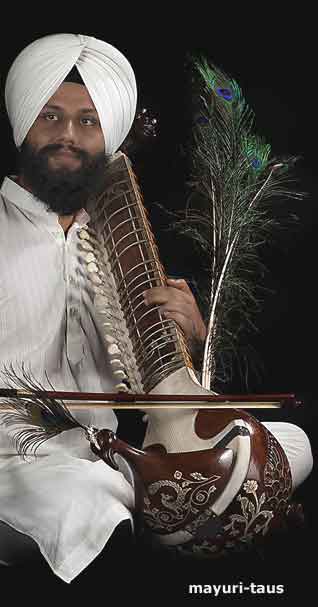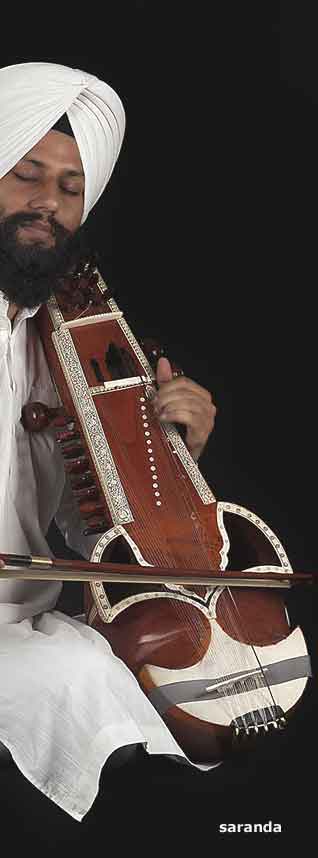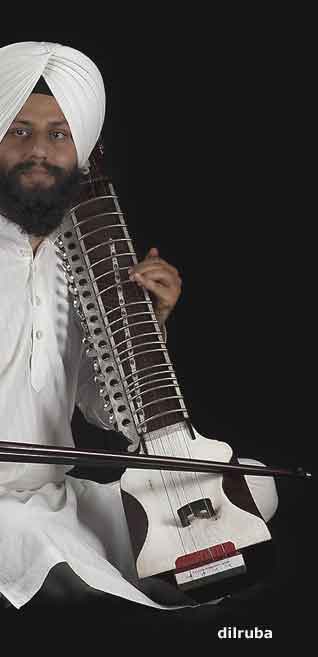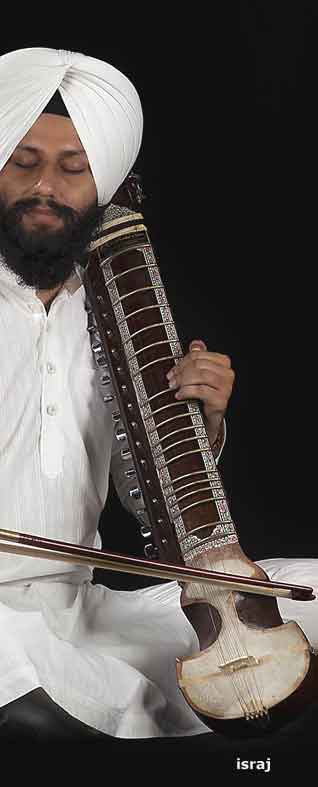Music
Reviving a Tradition:
Sikh Musical Instruments of Yesteryear
Text & Photos by AMARDEEP SINGH
Music is a double edged sword.
Its effective use can create emotions that help evolve the individuality of the being. On the other hand it can also be instrumental in arousing destructive feelings.
It is for this reason that the Sikh Kirtan (devotional spiritual singing) was historically done within a prescribed framework. Unique stringed instruments were adopted to create emotions that complemented the spiritual message being delivered through singing of hymns.
Harmonium, the most widely used instrument these days to accompany kirtan, is not a Punjabi or subcontinental musical instrument. Colonial Europeans brought the Harmonica Organ with them, to be used in churches, and adapted it into a portable music box in the shape of current day Harmonium. Due to its portability, it was effective in helping the Christian missionaries reach the remote parts of India.
In the century following the annexation of Punjab by the British, the traditional string instruments of the land went into oblivion, being totally replaced in everyday use by the Harmonium.
According to Sikh classical music, the human ear can recognize twenty-two musical notes in an octave. The harmonium only offers twelve discreet notes in an octave. The additional ten notes are the key to why a string instrument is better in the delivery of emotions as compared to a harmonium.
It is now widely recognized and acknowledged that the harmonium is not ideally suited for Sikh music. Traditionally, kirtan was done only with string instruments.
An old black-and-white photograph in Bhai Kahn Singh Nabha’s ‘Mahan Kosh’ (Encyclopaedia) shows the string instruments used in the past for kirtan singing.
The unique advantage that the harmonium offers, however, is that it is easy to learn. In contrast, string instruments require years of patient practice to be able to reach an acceptable level of performance.
Ideally, the harmonium should have never been used in the Sikh kirtan tradition but it gained rapid acceptance because of its ease in learning it. This became the very reason for gradual disappearance of traditional musical instruments and the loss of a rich heritage.
Kirtan, it must be remembered, involves the delivery of a message in the form of words to impact the rational mind, combined with an arousal of matching emotions through proper music accompaniment.
The dormant tradition of string instruments is, however, being revived by a number individuals and groups. It is heartening to see the ship being steered again in the right direction.
Satnam Singh, the kirtan and musical instrument teacher at the Sikh Centre, Gurdwara Silat Road, Singapore, is one such individual who draws on many of these traditional string instruments.
I had the opportunity recently to photograph Satnam Singh playing the Rabab, Mayuri, Taus, Saranda, Dilruba and Israj.
Edited for sikhchic.com
Please CLICK here to see the complete photo exhibit.
July 19, 2013
Conversation about this article
1: Harminder Singh (Jalandhar, Punjab), July 20, 2013, 8:12 AM.
Satnam Singh ji, it is good that you have taken the initiative to revive traditional Sikh classical musical Instruments. Amardeep Singh ji's pictures of you with them are indeed excellent.






